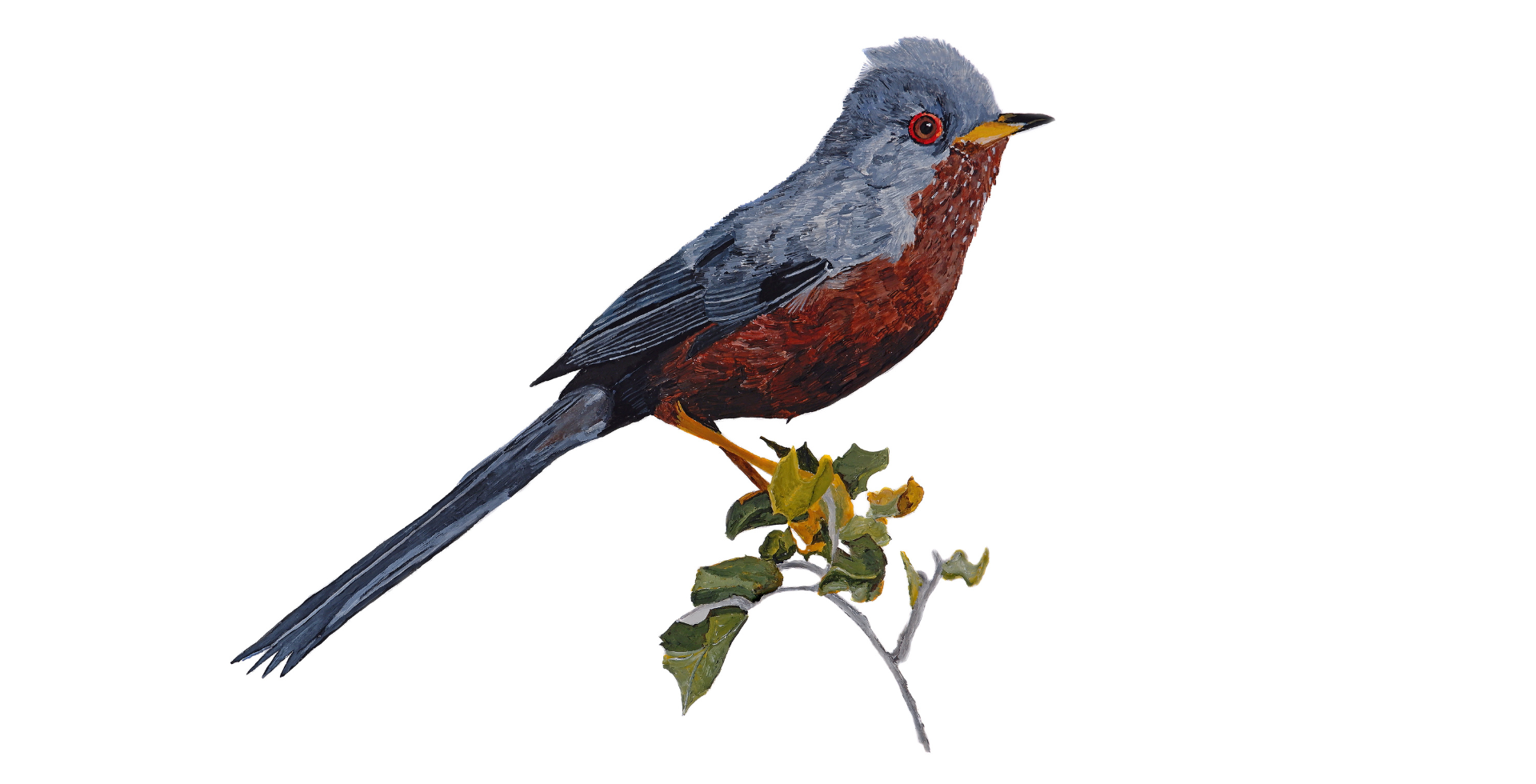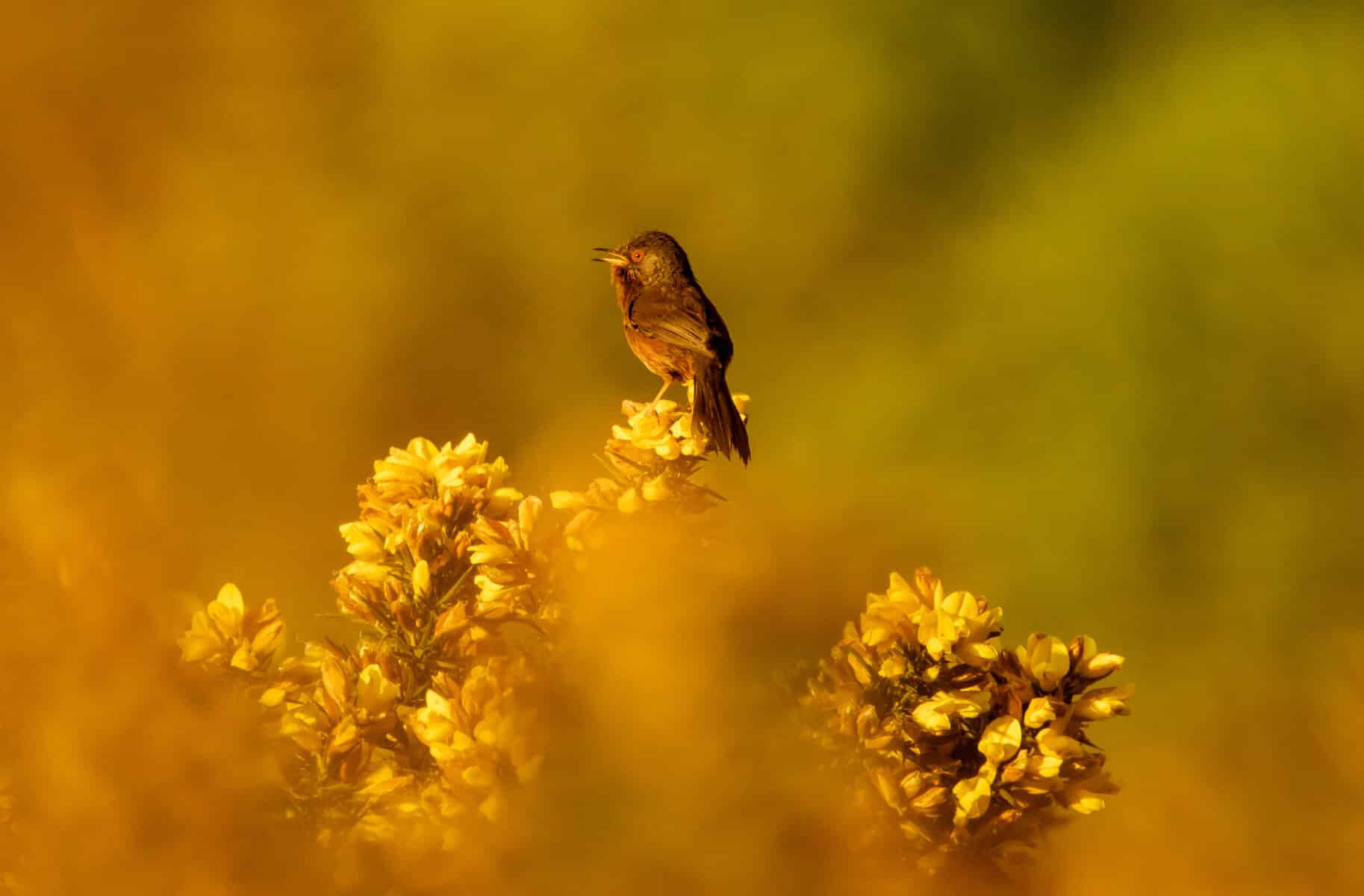These illustrations are by an artist taking part in a programme delivered by Watts Gallery Trust and funded by the Michael Varah Memorial Fund. This series of 30 Surrey Hills Indicator Species were commissioned by Surrey Hills Society and funded by Surrey Hills Trust Fund as part of the Making Space for Nature Exhibition.

Dartford Warbler
What is a Dartford Warbler?
The Dartford warbler is an important heathland indicator species because it depends completely on mature, dry heath habitats. Gorse that is in good condition is particularly important for its winter survival. This small, brown bird has a long tail, a distinctive red eye-ring and a cherry-red breast. The male has a dirty white patch in the centre of the belly. It is most often spotted warbling its scratchy, rambling song from the top of a gorse stem.
Why is the Dartford Warbler important to the Surrey Hills?
The UK supports internationally important numbers of Dartford warbler and 10% of the national population occurs in Surrey. When the UK’s breeding population of Dartford warblers crashed in the 1960s, only 10 pairs remained but today around 3,200 pairs nest on our lowland heaths and its population continues to increase. The UK population may become increasingly important as projections indicate that by 2080, more than 60% of the current European range may no longer be suitable3. It is protected by the Wildlife and Countryside Act (1981) and its UK conservation status is Amber.

Image with thanks to Mark Crisp, Warden at RSPB Farnham Heath

What habitat does a Dartford Warbler like?
Heathland
Lowland heathland is a habitat of outstanding importance for its range of nationally and internationally rare or endangered species. These ancient, open landscapes are generally found on poor, acid, sandy soils less than 300 metres above sea level. They are characterised by dwarf shrubs of the heather family.
What can be done to benefit the Dartford Warbler?
Good heathland management for this species will create/result in heathland in good condition with heather and gorse to provide song-posts, nest-sites and feeding areas. This will benefit a wide range of other species that depend on dry heath habitats, for example, the insects on which the Dartford warbler feeds and other heathland birds such as the stonechat with similar habitat requirements. It will also benefit the rare smooth snake and sand lizard.
Opportunities to create/improve/extend suitable habitat for this species include:
- Grazing by hardy livestock breeds to control scrub and dominant grasses
- Regenerating heather by controlled burning, cutting or turf stripping
- Controlling bracken either by regular cutting or rolling or by treatment with an approved herbicide
- Clearing scrub and controlling its regrowth
- Selective thinning of trees including conifer plantations
- Managing drainage to conserve areas of wet heath
- Managing fire risk
Creating and managing areas for the Dartford Warbler will help deliver the following benefits to communities:
- Clean water
- Clean air
- Protection from and mitigation of environmental hazards
- Mitigation of and adaptation to climate change
- Thriving plants and wildlife
- Beauty, heritage and engagement
